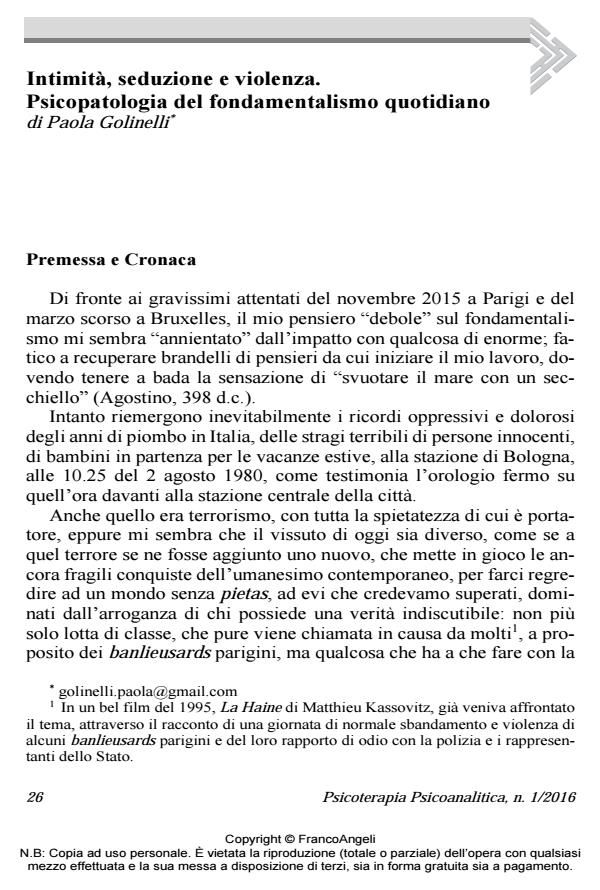"Psychopathology of everyday fundamentalism". Intimacy, seduction and violence
Journal title PSICOTERAPIA PSICOANALITICA
Author/s Paola Golinelli
Publishing Year 2016 Issue 2016/1
Language Italian Pages 15 P. 26-40 File size 188 KB
DOI 10.3280/PSP2016-001003
DOI is like a bar code for intellectual property: to have more infomation
click here
Below, you can see the article first page
If you want to buy this article in PDF format, you can do it, following the instructions to buy download credits

FrancoAngeli is member of Publishers International Linking Association, Inc (PILA), a not-for-profit association which run the CrossRef service enabling links to and from online scholarly content.
The author presents some reflections on aspects of the psychic life that we all share and face in our everyday work and life. These same aspects, under certain historical circumstances together with elements of different origin, can enlarge, reach dimensions and cause consequences uncontrollable and extremely dangerous in private and public life. The author underlines that we are faced with areas of "psychic fundamentalism" in life, in the clinical work and in the institutional relationship with colleagues as we are in the theoretical disputes. This may happen any time we "shut the door" in front of the other people’s reasons and thinkings. Two clinical vignettes illustrate the papers.
Keywords: Fundamentalism, idealization, psychic reality and outer reality, intimacy, perversion, creation of intimacy.
Paola Golinelli, Intimità, seduzione e violenza. Psicopatologia del fondamentalismo quotidiano in "PSICOTERAPIA PSICOANALITICA" 1/2016, pp 26-40, DOI: 10.3280/PSP2016-001003